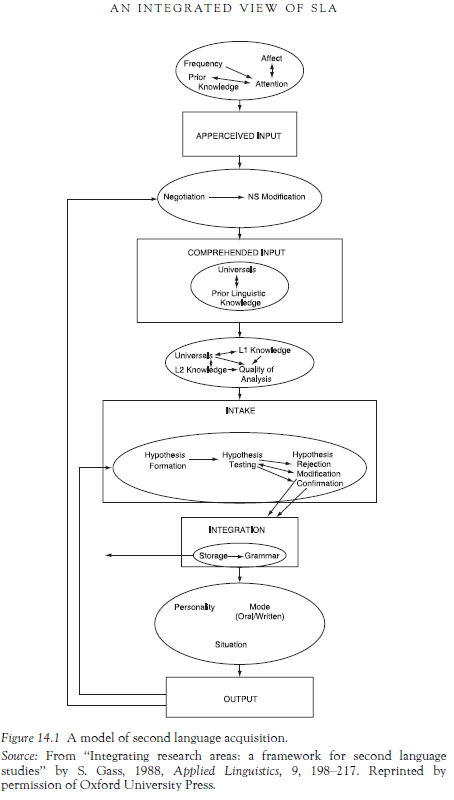Presentation on Long’s Cognitive Interactionist Theory
Watch Geoff Jordan take a look at how we learn an L2. Take notes and prepare for a quick comprehension check in the next section. The presentation file can be downloaded separately by clicking on the Materials tab.
References
The Gass diagram referred to at 3:23 in the presentation can be seen more clearly below:

Meanwhile, these are the texts referred to in the presentation: they are not necessarily recommended reading!
[dt_sc_fancy_ul style=”pushpin”]
- Gass, S. (1997). Input, interaction and the second language learner. Mahwah, NJ: Lawrence Erlbaum Associates.
- Long, M. (1996). The role of the linguistic environment in second language acquisition. In: W.C. Ritchie and T. K. Bhatia, eds., Handbook of second language acquisition. San Diego: Academic Press, pp. 413-68.
- Long, M. (2015). Second Language Acquisition and Task-Based Language Teaching. Chichester: Wiley Blackwell.
- Schmidt, R. (1990). The role of consciousness in second language learning. Applied Linguistics 11, 129-58.
- Schmidt, R. (2001). Attention. In: P. Robinson, ed., Cognition and Second Language Instruction. Cambridge: Cambridge University Press, pp. 3-32.
- Whong, M., Gil, K. H., & Marsden, H. (2014). Beyond paradigm: The ‘what’ and the ‘how’ of classroom research. Second Language Research, 30(4), pp. 551-568.
[/dt_sc_fancy_ul]
